
FACULTY OF COMMUNICATION
Department of Cinema and Digital Media
CDM 341 | Course Introduction and Application Information
| Course Name |
Animals and Cinema
|
|
Code
|
Semester
|
Theory
(hour/week) |
Application/Lab
(hour/week) |
Local Credits
|
ECTS
|
|
CDM 341
|
Fall/Spring
|
3
|
0
|
3
|
4
|
| Prerequisites |
None
|
|||||
| Course Language |
English
|
|||||
| Course Type |
Elective
|
|||||
| Course Level |
First Cycle
|
|||||
| Mode of Delivery | - | |||||
| Teaching Methods and Techniques of the Course | DiscussionQ&ALecture / Presentation | |||||
| Course Coordinator | - | |||||
| Course Lecturer(s) | ||||||
| Assistant(s) | - | |||||
| Course Objectives | This course explores the relationship between animals, humans, and cinema and the intersections these relations complicate. Key questions include: what are the cinematic narratives that revolve around the human understanding of the non-human animal? how are societal norms around animal intelligence and sentience reinforced or challenged in cinema? can humans ever depict animals on screen in non-anthropocentric terms? |
| Learning Outcomes |
The students who succeeded in this course;
|
| Course Description | This course investigates cinema’s portrayal of animals across a diverse number of theoretical and historical registers. We will discuss the specific ways in which humans see animals focusing on a series of films. |
|
|
Core Courses | |
| Major Area Courses |
X
|
|
| Supportive Courses | ||
| Media and Management Skills Courses | ||
| Transferable Skill Courses |
WEEKLY SUBJECTS AND RELATED PREPARATION STUDIES
| Week | Subjects | Related Preparation |
| 1 | Introduction to the course | |
| 2 | Meditation on YouTube, Cave Painting, and the Birth of Cinema. Screening: "Youtube Bestiary" ( J. L. Cahill, 2015) | Cahill, James Leo. “A YouTube Bestiary: 26 Theses on a Post-Cinema of Animal Attractions,” in New Silent Cinema, eds. Paul Flaig and Katherine Groo (New York: Routledge/AFI, 2015), 263-293. |
| 3 | Wildlife Films and Animal Umwelts. Screening: Gunda (Victor Kosakovskiy, 2020, 93 mins.) | Agamben, Giorgio. “The Tick”. The Open: Man and Animal. trans. Kevin Attell (Stanford: Stanford University Press, 2004), 39-43. Bousé, Dere. "False Intimacy: Close-Ups and Viewer Involvement in Wildlife Films." Visual Studies. 18, no. 2 (October 2003): 123-32. |
| 4 | Urban Animals. Screening: Kedi (Ceyda Torun, Turkey, 2016) and sections of Los Reyes (Bettina Perut and Iván Osnovikoff, Chilé, 2018, 78 min.) | Berger, John. “Why Look at Animals,” About Looking (New York: Pantheon, 1980), 1-26. Pick, Anat. “Why Not Look at Animals?” (January 2015, NECSUS European Journal of Media Studies. 4(1):107-125. Hart, Kimberly. "İstanbul's Intangible Cultural Heritage as Embodied by Street Animals," History and Anthropology, 30:4, 2019, pp. 448-459. |
| 5 | Colonialism, Ethnography, and Captivity. Screening: King Kong (Merian C. Cooper and Ernest B. Shoedsack, USA, 1933, 104 min.) | Tobing Rony, Fatimah. “King Kong and the Monster in Ethnographic Cinema” The Third Eye: Race, Cinema, and Ethnographic Spectacle (Durham, NC: Duke University Press, 1996), 157-191, 254-260. Zgórniak, Marek, et al., “Fremiet's Gorillas: Why Do They Carry off Women?” Artibus et Historiae, Vol. 27, No. 54 (2006), pp. 219-237. |
| 6 | Eco Horror. Screening: The Birds (Alfred Hitchcock, 1963, 119 min.) | Bellour, Raymond. “Hitchcock: The Animal, Life and Death,” in Animal Life and the Moving Image. Michael Lawrence and Laura McMahon, eds. (Bloomsbury, 2015). Carson, Rachel, Silent Spring. Boston: Houghton Mifflin, 2002. |
| 7 | The Creatures of Disney. Various screenings: Dumbo (Ben Sharpsteen, Walt Disney, USA, 1941, 64 min.), Plane Crazy (Ub Iwerks, USA, 1928), Steamboat Willie (Walt Disney and Ub Iwerks, USA, 1928) | Kracauer, Siegfried. “Dumbo,” The Nation 153 (8 November 1941), 463. Cahill, James Leo, “Anthropomorphism and its Vicissitudes: Reflections on Homme-sick Cinema.” in Screening Nature, 73-90, esp. 73-77. |
| 8 | Modern Scapegoats and The Sins of the Protagonist. Screening: The Banshees of Inirsherin (Martin McDonagh, 2022. 1 hr 54 mins.) | Girard, René. “Violence and Magic“ The Scapegoat. Johns Hopkins University, 1989, pp. 45 – 57. |
| 9 | Undesirable Animals and Domestication. Screening: Fehér isten / White God (Kornel Mundruczo, Hungary, 2014, 121 min.) | Lawrence, Michael. “Practically Infinite Manipulability: Domestic Dogs, Canine Performance and Digital Cinema.” Screen, 56.1 (2015), 115-120. Gündoğdu, Cihangir. "The State and the Stray Dogs in Late Ottoman İstanbul: From Unruly Subjects to Servile Friends," Middle Eastern Studies, 54:4, 2018, pp. 555-574. |
| 10 | Creaturely Fear: Animality. Screening: Lamm (Valdimar Jóhannsson, 2021, 106 min.) | Tidwell, Christy & Soles, Carter, eds. Fear & Nature: Ecohorror Studies in the Anthropocene (The Pennsylvania State University Press, 2021), "Introduction". |
| 11 | Creaturely Fear: Animals in Horror Film. Screening: The Witch (Roger Eggers, 2015, 92 min.) | Tidwell, Christy & Soles, Carter, eds. Fear & Nature: Ecohorror Studies in the Anthropocene (The Pennsylvania State University Press, 2021). |
| 12 | Animals and Agency: "Documenting a Delusion". Screening: Roar (Noel Marshall, USA, 1981, 102 min.) | Lippit, Akira Mizuta. “Introduction” Electric Animal. (Minneapolis: University of Minnesota Press, 2000), 1-26. Brody, Richard. “Noel Marshall’s “Roar”: Humans Were Harmed in the Making of This Film” The New Yorker, April 22, 2020. |
| 13 | Hierarchical Advocacy. Screening: The Cove (Louie Psihoyos, 2009, 92 mins.) | Packwood Freeman, Carrie. “Fishing For Animal Rights In The Cove: A Holistic Approach to Animal Advocacy Documentaries.” Journal for Critical Animal Studies, vol. 10, no. 1, 2012, pp. 104-118. Zimmerman, Tim. “The Killer in the Pool”, Outside Magazine, July 30, 2010. |
| 14 | Final Homework Assignment Due | |
| 15 | Course Review | |
| 16 | Course Review |
| Course Notes/Textbooks | Lawrence, Michael and Laura McMahon, eds. Animal Life and the Moving Image. London: Palgrave/BFI, 2015. Pick, Anat and Guinevere Narraway, Screening Nature: Cinema Beyond the Human. New York: Berghahn, 2013. |
| Suggested Readings/Materials | McMahon, Laura. Animal Worlds: Film, Philosophy and Time. Edinburgh: Edinburgh University Press, 2019 |
EVALUATION SYSTEM
| Semester Activities | Number | Weigthing |
| Participation |
1
|
10
|
| Laboratory / Application | ||
| Field Work | ||
| Quizzes / Studio Critiques | ||
| Portfolio | ||
| Homework / Assignments |
1
|
35
|
| Presentation / Jury | ||
| Project |
1
|
10
|
| Seminar / Workshop | ||
| Oral Exams | ||
| Midterm |
1
|
45
|
| Final Exam |
-
|
|
| Total |
| Weighting of Semester Activities on the Final Grade |
3
|
65
|
| Weighting of End-of-Semester Activities on the Final Grade |
1
|
35
|
| Total |
ECTS / WORKLOAD TABLE
| Semester Activities | Number | Duration (Hours) | Workload |
|---|---|---|---|
| Theoretical Course Hours (Including exam week: 16 x total hours) |
16
|
3
|
48
|
| Laboratory / Application Hours (Including exam week: '.16.' x total hours) |
16
|
0
|
|
| Study Hours Out of Class |
14
|
2
|
28
|
| Field Work |
0
|
||
| Quizzes / Studio Critiques |
0
|
||
| Portfolio |
0
|
||
| Homework / Assignments |
1
|
16
|
16
|
| Presentation / Jury |
0
|
||
| Project |
1
|
6
|
6
|
| Seminar / Workshop |
0
|
||
| Oral Exam |
0
|
||
| Midterms |
1
|
22
|
22
|
| Final Exam |
0
|
||
| Total |
120
|
COURSE LEARNING OUTCOMES AND PROGRAM QUALIFICATIONS RELATIONSHIP
|
#
|
Program Competencies/Outcomes |
* Contribution Level
|
||||
|
1
|
2
|
3
|
4
|
5
|
||
| 1 | To be able to have fundamental knowledge about narrative forms in cinema, digital and interactive media, and the foundational concepts relevant to these forms. |
X | ||||
| 2 | To be able to create narratives based on creative and critical thinking skills, by using the forms and tools of expression specific to cinema and digital media arts. |
|||||
| 3 | To be able to use the technical equipment and software required for becoming a specialist/expert in cinema and digital media. |
|||||
| 4 | To be able to perform skills such as scriptwriting, production planning, use of the camera, sound recording, lighting and editing, at the basic level necessary for pre-production, production and post-production phases of an audio-visual work; and to perform at least one of them at an advanced level. |
|||||
| 5 | To be able to discuss how meaning is made in cinema and digital media; how economy, politics and culture affect regimes of representation; and how processes of production, consumption, distribution and meaning-making shape narratives. |
X | ||||
| 6 | To be able to perform the special technical and aesthetic skills at the basic level necessary to create digital media narratives in the fields of interactive film, video installation, experimental cinema and virtual reality. |
|||||
| 7 | To be able to critically analyze a film or digital media artwork from technical, intellectual and artistic perspectives. |
X | ||||
| 8 | To be able to participate in the production of a film or digital media artwork as a member or leader of a team, following the principles of work safety and norms of ethical behavior. |
|||||
| 9 | To be able to stay informed about global scientific, social, economic, cultural, political, institutional and industrial developments. |
|||||
| 10 | To be able to develop solutions to legal, scientific and professional problems surrounding the field of cinema and digital media. |
|||||
| 11 | To be able to use a foreign language to communicate with colleagues and collect data in the field of cinema and digital media. ("European Language Portfolio Global Scale", Level B1). |
|||||
| 12 | To be able to use a second foreign language at the medium level. |
|||||
| 13 | To be able to connect the knowledge accumulated throughout human history to the field of expertise. |
X | ||||
*1 Lowest, 2 Low, 3 Average, 4 High, 5 Highest
NEWS |ALL NEWS
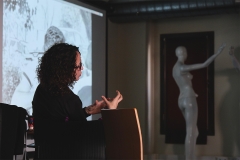
"Working with Found Footage" Workshop Organized with Zeyno Pekünlü
Artist, director, activist and academician Zeyno Pekünlü was the guest of CDM232: Digital Film Studio II.
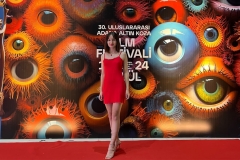
CDM senior year student Ecem has been selected to the Animation category at Adana Altın Koza Film Festival
CDM 4th-grade student Ecem Çörtle has been selected as a finalist in the National Student Films category of the 30th International Adana
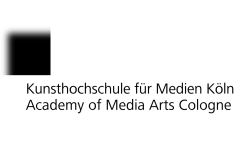
CDM graduate Eylül Berivan Kızılırmak has been accepted to the Cologne Academy of Media Arts
CDM graduate Eylül Berivan Kızılırmak has been accepted to the master's program at the Academy of Media Arts Cologne (Kunsthochschule für Medien Köln).
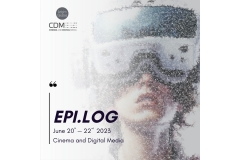
Traditionalistic CDM End of Year Exhibition EPI.LOG took place in FC Studios
Cinema and Digital Media End of Year Exhibition EPI.LOG 2023, organized as part of IUE Faculty of Communication Exhibition "FC-EX 2023", was
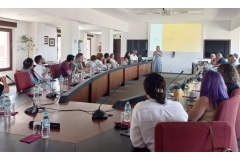
IUE Faculty of Communication Advisory Board members visited our Faculty and Studios on June 22, 2023
IUE Faculty of Communication Advisory Board members Andreas Treske, Ayşe Matay, Barbaros Görgü, Dilek Gappi, Elif Demirci İşleğen, Emine Uysal Berger, Murat
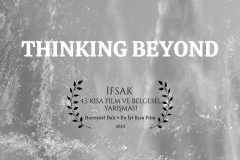
Ataberk awarded at the İFSAK 43rd National Short Film and Documentary Competition
Our third-year student, Ataberk Eyolcu, returned from the 43rd National Short Film and Documentary Competition of İFSAK (Istanbul Photography and Cinema Amateurs
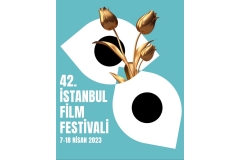
Our third-year CDM student Fikret Başar Kaya was at the 42nd Istanbul Film Festival
Our third year CDM student Fikret Başar Kaya participated as a Young Jury at the 42nd Istanbul Film Festival held on April
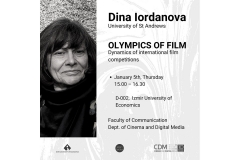
CDM hosted Dina Iordanova
Prof. Dina Iordanova gave a speech titled Olympics of Film: Dynamics of international film competitions on Thursday, January 5, 2023, in D002 at Izmir

